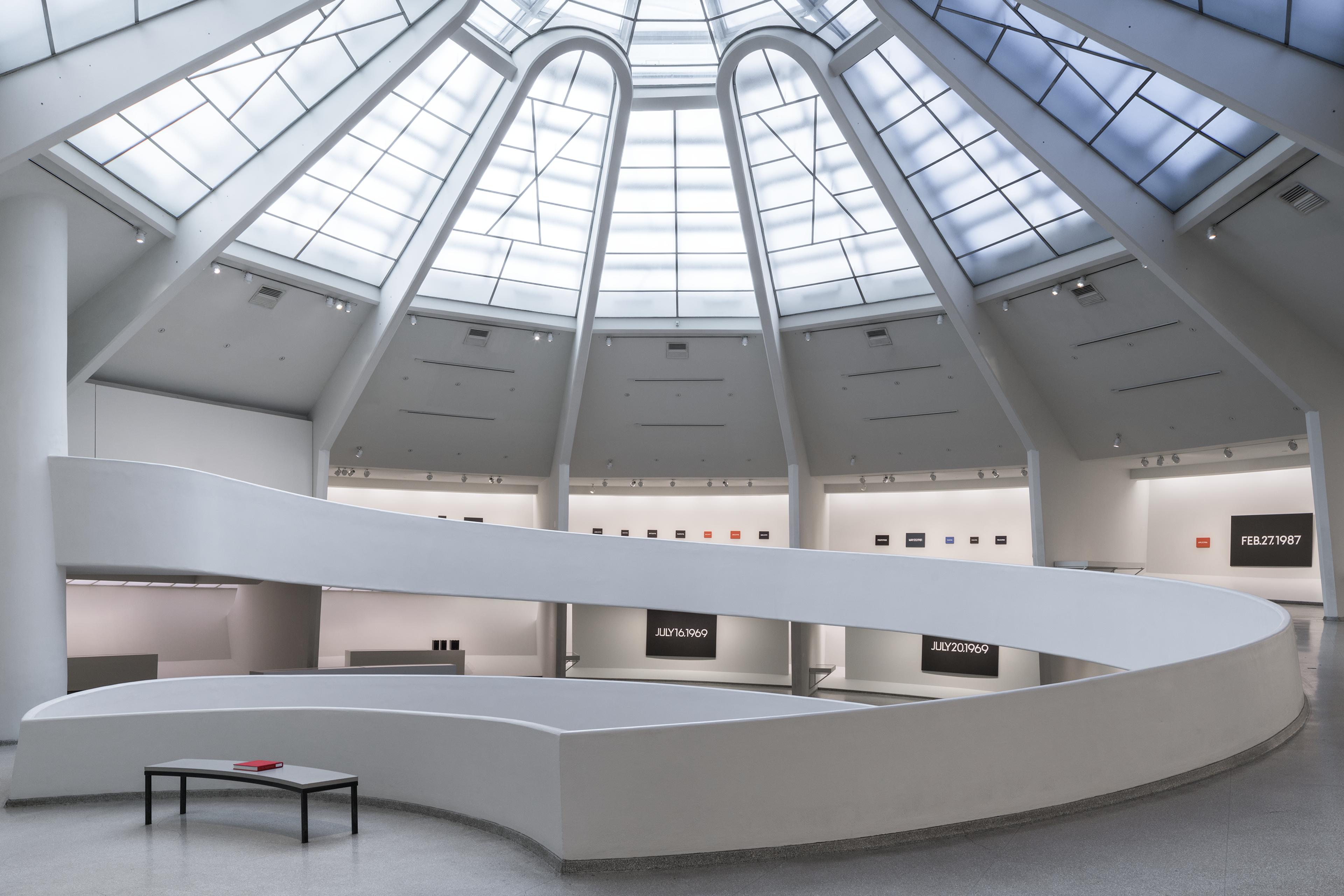Solomon R. Guggenheim Museum, New York, United States
2015
February 6 – May 3
On Kawara—Silence was an unprecedented survey of the artist's work atthe Guggenheim Museum in New York. The exhibition was curated by the Guggenheim's Senior Curator Jeffrey Weiss with Anne Wheeler.
Silence featured every type of work Kawara made over five decades, including painting, drawings, books, and recordings that examine chronological time as a measure of human existence. The artist is best known for the Today series, a body of work begun on January 4, 1966 in which he painted the numerical date of each day on that day, a practice he continued until his death. 150 of these "date" paintings were presented at the Guggenheim, starting with the very first work in the series. Also included in the exhibition were postcards from the I Got Up series, which Kawara would send to different individuals to declare the time at which he had arisen that day, telegrams from the I Am Still Alive series, maps that compose the I Went series, and lists of the names of people the artist met on a given day from the I Met series. In conjunction with the exhibition, the Guggenheim organized readings from One Million Years (Past and Future), Kawara's epic work consisting of 24 volumes listing dates one million years into the future and one million years into the past.
Silence was described in The New York Times as "an enthralling experience" and as "a moving and generous exhibition" in The Guardian. Kawara's date paintings reminded The Nation's critic "of Donald Judd’s praise, in his essay "Specific Objects," … of an art that would embody an order that 'is not rationalistic and underlying but is simply order, like that of continuity ...'"
On Kawara—Silence was accompanied by a Guggenheim Museum publication edited by Jeffrey Weiss and Anne Wheeler. The volume is published with four differently colored covers reflecting those Kawara used in his date paintings.
